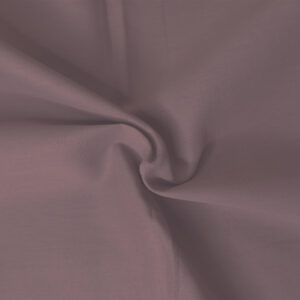
Introduction
The Turban shop birmingham is a significant symbol of faith, identity, and cultural heritage, is an essential part of Sikh and Punjabi traditions. For individuals who wear turbans daily or on special occasions, choosing the right turban material is crucial for comfort, durability, and style. With the increasing demand for high-quality turbans, understanding fabric types, their characteristics, and where to buy them has become important. This article explores the various aspects of buying turban material, including types of fabrics, factors to consider, places to purchase them, and the evolving trends in turban fashion.
Importance of Choosing the Right Turban Material
The material of a turban affects its appearance, comfort, and functionality. A well-chosen fabric ensures ease of tying, breathability, and longevity. Since turbans are worn for extended periods, the selection process should take into account climate, personal preferences, and cultural significance.
Different occasions may call for different types of turbans. For instance, a formal or ceremonial turban might require a premium-quality fabric, while an everyday turban should be lightweight and breathable. Selecting the right material also ensures that the turban maintains its shape and remains comfortable throughout the day.
Types of Turban Materials
Punjabi and Sikh turbans come in various fabric types, each with unique properties. Here are some of the most commonly used materials:
- Rubia Fabric
Rubia is a widely used material for turbans due to its soft texture and durability. It has a slightly thicker weave, making it ideal for formal wear. The fabric provides good volume and maintains its shape well.
- Full Voile
One of the most popular choices for turbans, full voile is a lightweight and breathable fabric. It allows air circulation, making it comfortable to wear in all weather conditions. Voile is easy to tie and comes in a variety of colors, catering to personal and cultural preferences.
- Malmal (Muslin)
Malmal, or muslin, is a soft and fine cotton fabric, often preferred for its lightweight feel. This fabric is traditionally used by individuals who prefer a thinner and more delicate turban. It drapes well and offers a sophisticated look, suitable for special occasions.
- F-74 Fabric
F-74 is another high-quality turban fabric known for its softness and slightly heavier texture than voile. It is a favored choice for individuals who prefer a turban that stays in place while being comfortable to wear.
- Cotton Blend Fabrics
Blended cotton fabrics offer the durability of cotton while incorporating synthetic fibers for added strength and wrinkle resistance. These turbans are easy to maintain and provide a structured look.
- Silk and Satin Turbans
Silk and satin turbans are primarily worn for weddings and formal events. Their luxurious sheen and smooth texture make them a preferred choice for celebratory occasions, though they are less practical for daily wear.
Factors to Consider When Buying Turban Material
When purchasing turban fabric, several factors should be taken into account to ensure quality and suitability:
- Comfort and Breathability
Since turbans are often worn for long hours, comfort is paramount. Lightweight and breathable fabrics like voile and malmal are suitable for warmer climates, while thicker fabrics like rubia may be preferable in colder weather.
- Durability and Maintenance
A good-quality turban should withstand regular washing and tying without losing its color or texture. Cotton and blended fabrics tend to be durable and easier to maintain.
- Color and Personal Preference
Turbans come in a wide range of colors, allowing individuals to choose shades that reflect their personality, cultural significance, or special occasions. Traditional colors such as white, navy blue, saffron, and black hold religious and historical significance within Sikhism.
- Length and Width
Turbans vary in length and width, depending on the desired style. Some individuals prefer longer turbans for layered wrapping, while others opt for shorter ones for simpler tying methods.
- Weather Suitability
The climate plays a crucial role in fabric selection. Light and airy fabrics like voile are ideal for summer, while heavier fabrics like rubia provide warmth in colder months.
Where to Buy Turban Material
With the rise of e-commerce and dedicated turban stores, there are multiple options for purchasing high-quality turban material:
- Local Fabric Stores
Many cities with a strong Sikh and Punjabi presence, such as London, Birmingham, and Leicester, have specialized turban stores offering a variety of fabrics. These stores provide in-person assistance in selecting the right material.
- Online Retailers
Numerous online platforms sell turban material, offering convenience and a broad selection. Websites specializing in Sikh and Punjabi clothing provide authentic fabric options with delivery services.
- Gurdwara Shops
Many Gurdwaras (Sikh temples) have small shops where devotees can purchase religious articles, including turban material. Buying from a Gurdwara shop ensures authenticity and often supports community initiatives.
- Sikh Festivals and Cultural Events
Events like Vaisakhi celebrations often feature vendors selling high-quality turban material. Attending such events allows buyers to explore different fabrics and learn about traditional tying techniques.
Modern Trends in Turban Fabrics
While traditional turban fabrics remain popular, modern trends are influencing the choices available. Some of the latest trends include:
- Designer Turbans – Fashion designers are incorporating innovative patterns and prints into turban fabrics, making them more appealing to younger generations.
- Pre-Stitched and Easy-Tie Turbans – To accommodate busy lifestyles, pre-tied or ready-to-wear turbans are becoming increasingly available.
- Eco-Friendly and Organic Fabrics – Sustainable fabric options, such as organic cotton, are gaining traction among those who prefer environmentally friendly choices.
Conclusion
Choosing the Pagh material birmingham is an essential decision that affects comfort, appearance, and cultural expression. With a variety of fabrics available, from voile and rubia to silk and cotton blends, individuals can find materials that best suit their preferences and needs. Whether purchasing from local stores, online retailers, or Gurdwara shops, ensuring the right selection enhances the overall turban-wearing experience. As trends evolve and new fabric innovations emerge, the timeless tradition of wearing turbans continues to flourish, reflecting both heritage and personal identity.





